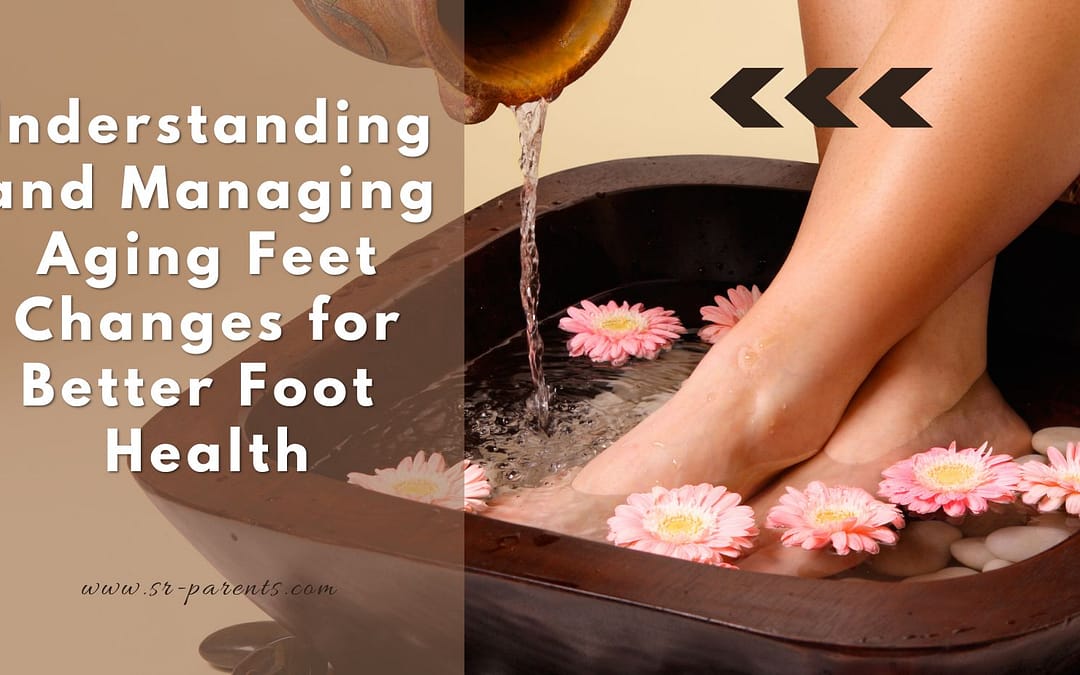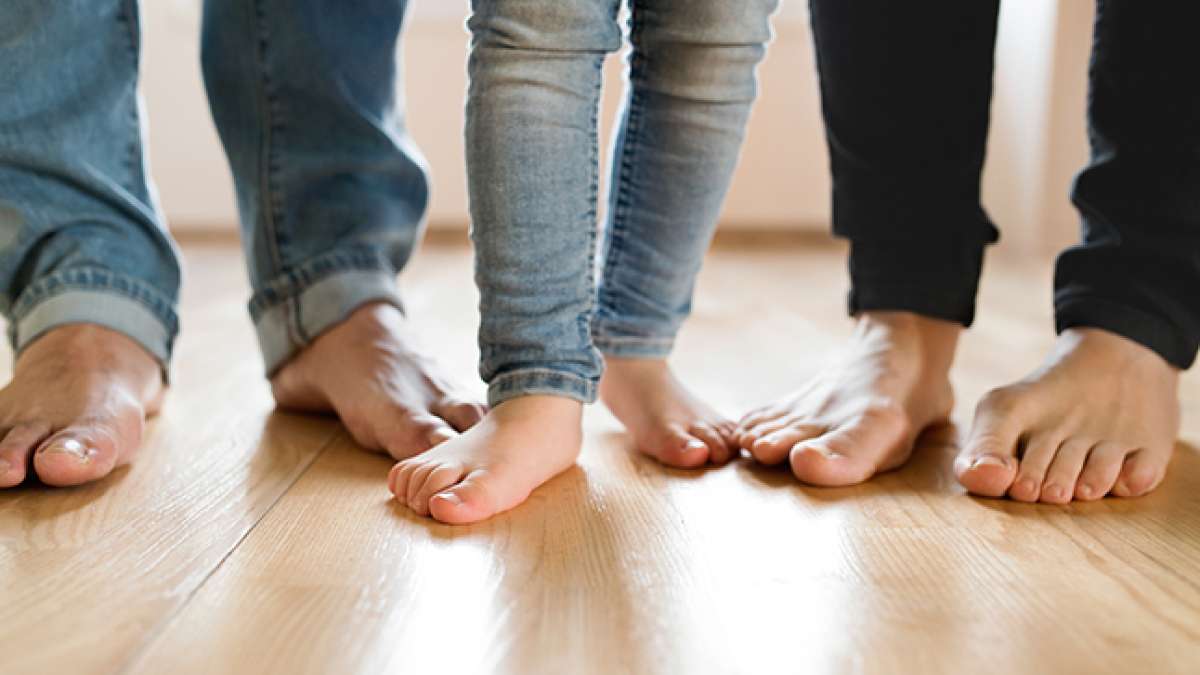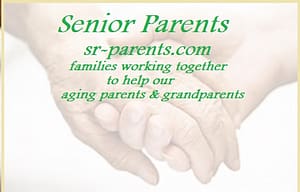Aging feet changes encompass a series of physiological alterations that occur in the feet as individuals grow older. These changes impact various aspects of foot health and can significantly affect overall well-being. Understanding these transformations is crucial for proactive foot care and management. Foot pain is prevalent among aging individuals, often attributed to conditions like plantar fasciitis, stress fractures, and wear and tear arthritis. Flat feet, characterized by a decreased arch in the foot, can lead to discomfort and instability. These foot problems can result in decreased mobility and an increased risk of falls, especially with balance issues and poor circulation.
The big toe joint, a critical part of foot anatomy, may be affected by gout or osteoarthritis, leading to pain and limited mobility. High heels and ill-fitting shoes can also exacerbate foot pain and discomfort, emphasizing the importance of wearing appropriate footwear. Achilles tendon problems, including tendinitis, can cause pain in the heel area, while toe joint issues like claw toes or ingrown toenails may require medical treatment. Podiatric care and physical therapy can be instrumental in relieving pain and improving foot health for older adults. Aging foot changes encompass various issues, from structural alterations to discomfort and pain. Recognizing the significance of these changes and their associated risk factors is essential for maintaining foot health and overall quality of life in older individuals.
Contents
Anatomy of the Foot
The human foot is an intricate structure comprising various interconnected components that provide support, balance, and mobility. Aging feet undergo changes that can impact their function and comfort. In this exploration, we delve into the anatomy of the foot, breaking down its key components and how they relate to aging.
Bones
At the core of the foot’s structure are 26 bones, making up about a quarter of all the bones in the human body. These bones are categorized into three main groups:
- The tarsal bones (forming the ankle and upper part of the foot)
- The metatarsal bones (comprising the middle part of the foot)
- The phalanges (the toe bones)
As individuals age, their bone density may decrease, increasing vulnerability to fractures and conditions such as osteoporosis. This decreased bone density can affect the overall stability and strength of the foot.
Joints
The foot contains multiple joints that facilitate movement and flexibility. One of the most crucial joints in the foot is the ankle joint, connecting the lower leg bones (tibia and fibula) to the talus bone in the foot. This joint allows for dorsiflexion (toes moving upward) and plantarflexion (toes moving downward) of the foot. Aging can bring about changes in joint health, including the development of arthritis, leading to pain, stiffness, and reduced mobility in the foot and ankle joints.
Muscles
The foot is home to a complex network of muscles that play a pivotal role in mobility and maintaining arch support. These muscles are divided into intrinsic muscles (located within the foot) and extrinsic muscles (originating outside the foot). Muscle atrophy, or the loss of muscle mass, can occur as individuals age. This atrophy can affect the strength and stability of the foot, potentially leading to issues such as decreased balance and an increased risk of falls.
Ligaments
Ligaments are strong, fibrous bands that connect bones, providing joint stability. In the foot, several ligaments help maintain the arches and stabilize the ankle and other joints.
The aging process can impact these connective tissues called ligaments, reducing their elasticity and strength. This can result in ligament laxity and an increased risk of sprains and instability in the foot and ankle.
Skin and Nails
The skin on the feet is unique, often subjected to friction and pressure. With aging, changes in the skin can occur, including dryness and thinning. This can make the skin more susceptible to cracking and developing conditions such as corns and calluses. Nail health can also be affected by aging, with nails becoming brittle and more prone to fungal infections. Additionally, ingrown toenails may become a more common issue.
Common Aging-Related Foot Changes
As individuals age, various physiological changes occur throughout the body, including the feet. These changes can significantly impact overall mobility, comfort, and quality of life. Let’s delve into the common aging-related foot changes that individuals may experience. From structural changes to functional alterations and skin/nail transformations, this aims to provide a detailed understanding of the challenges of aging feet and the importance of proactive foot care.
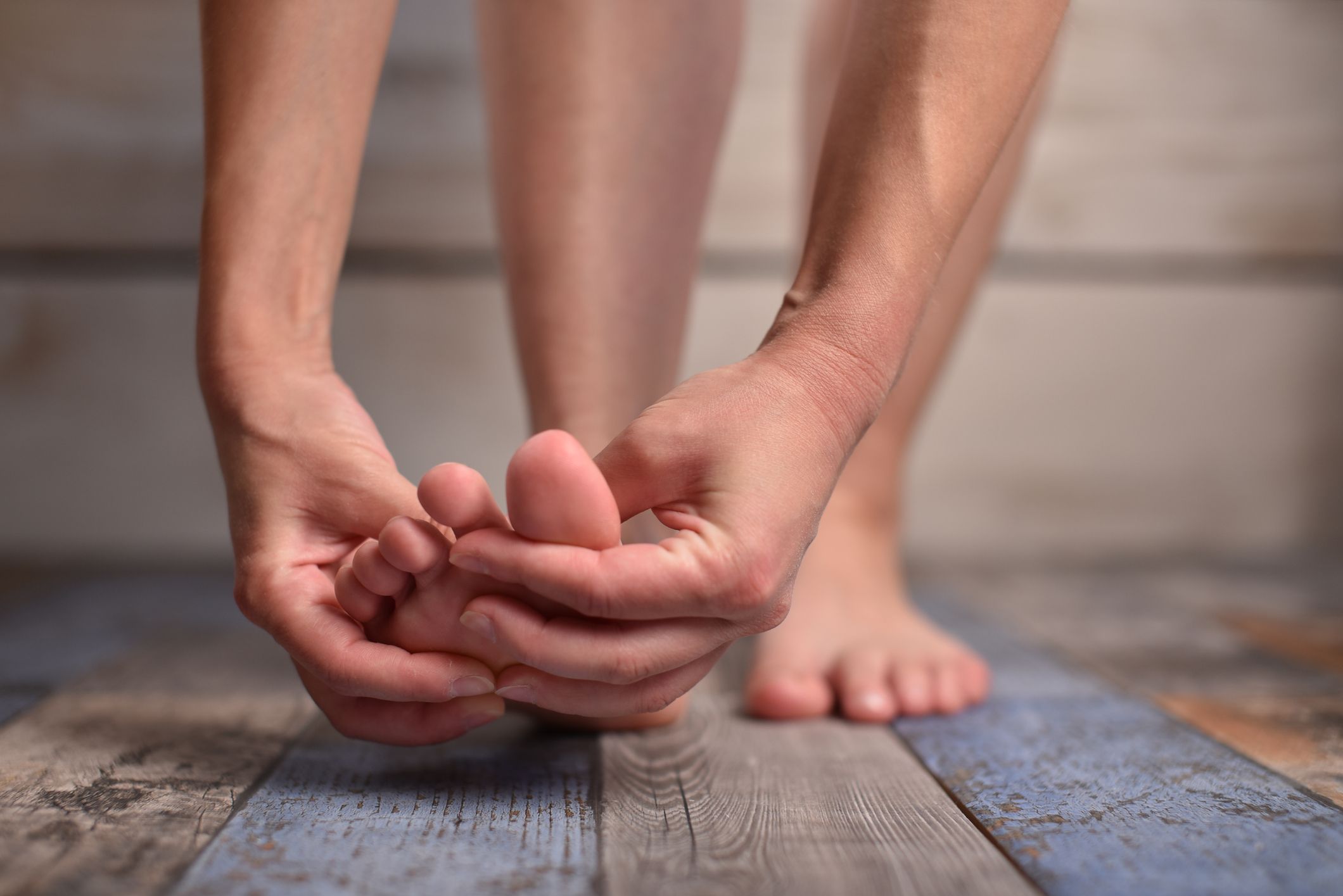
Structural Changes
Aging can bring about structural changes in the feet, affecting the bones, joints, and muscles that make up this complex anatomical region. These changes can contribute to various foot problems and discomfort.
Decreased Bone Density
One notable structural change in aging feet is decreased bone density. This decrease in bone density, often associated with conditions like osteoporosis, makes the bones more fragile and susceptible to fractures. The bones of the feet, including the metatarsals and phalanges, are not immune to this phenomenon, and as a result, seniors may experience a heightened risk of foot fractures.
Joint Degeneration
Aging also leads to joint degeneration in the feet, resulting in osteoarthritis. The big toe joint, in particular, is commonly affected, leading to pain, stiffness, and reduced mobility. This degeneration can significantly impact an individual’s ability to walk comfortably.
Muscle Atrophy
Muscle atrophy, or the gradual loss of muscle mass, is another structural change in aging feet. The muscles in the feet may weaken over time, affecting the foot’s ability to provide support and maintain proper alignment. As a consequence, individuals may experience difficulties in maintaining balance and stability.
Functional Changes
In addition to structural changes, aging feet undergo functional alterations that affect mobility and overall foot health.
Reduced Range of Motion
One common functional change is a reduced range of motion in the feet. Decreased flexibility in the foot’s joints and ligaments can make it challenging to move the foot freely. This reduced range of motion can be especially problematic when performing tasks requiring bending or stretching the feet.
Balance and Stability Issues
Aging feet are often accompanied by balance and stability issues. The combination of weakened muscles, reduced range of motion, and joint degeneration can make it difficult for older individuals to maintain their balance while standing or walking. This can increase the risk of falls and related injuries.
Decreased Proprioception
Proprioception, or the body’s ability to sense its position in space, can decline with age. This reduction in proprioception can affect the feet, making it harder to detect changes in terrain or maintain proper foot positioning. This can lead to tripping or stumbling.
Skin and Nail Changes
Apart from structural and functional changes, aging feet also exhibit changes in the skin and nails. These changes can impact foot health and comfort.
Dryness and Thinning of Skin
Aging often leads to dryness and thinning of the skin on the feet. The reduced production of natural oils can result in dry, flaky skin, making it more susceptible to cracking and developing painful fissures.
Brittle Nails
The nails on aging feet may become brittle and prone to splitting or breaking. This can be a source of discomfort and can make proper nail care more challenging.
Corns, Calluses, and Bunions
Corns, calluses, and bunions are common foot issues that can become more prevalent with age. These are thickened areas of skin that often develop due to friction or pressure, while bunions involve a big toe joint deformity. These conditions can cause pain and discomfort.
Pain and Discomfort
Foot pain and discomfort are prevalent issues among older adults. These issues can significantly impact one’s quality of life, making understanding the underlying causes and potential solutions essential.
Arthritis and Joint Pain
Arthritis is a common condition that affects the joints, including those in the feet. The aging process can lead to the breakdown of cartilage and the development of arthritis, causing pain, stiffness, and reduced mobility in the foot joints.
Plantar Fasciitis
Plantar fasciitis is another painful condition that often affects older adults. It involves inflammation of the plantar fascia, a thick band of tissue that runs along the bottom of the foot. This condition can result in intense heel pain, particularly during the first steps in the morning.
Neuropathy
Neuropathy is a condition characterized by nerve damage, which can lead to tingling, numbness, and burning sensations in the feet. Diabetic neuropathy is especially common among older adults with diabetes, further exacerbating foot pain and discomfort.
Foot Deformities
Foot deformities can become more prevalent as individuals age, impacting both foot structure and function. Understanding these deformities is essential for early intervention and effective management.
Hammertoes
Hammertoes are characterized by an abnormal bend in the toe’s middle joint, causing it to curl downwards. This condition can be painful and may lead to the development of corns or calluses on the tops of the affected toes.
Hallux Valgus (Bunions)
Hallux valgus, commonly known as bunions, is a big toe joint deformity where the toe deviates towards the smaller toes. Bunions can be painful and may require surgical intervention in severe cases.
Claw Toes
Claw toes are toes that have an abnormal bend in both the middle and end joints, resembling a claw. This deformity can make it challenging to find comfortable footwear and may lead to discomfort.
Risk of Falls
Foot health is closely linked to balance and stability. As individuals age, foot changes can increase the risk of falls, which can have severe consequences for older adults.
Impact of Foot Changes on Balance
The structural and functional changes in the feet, such as reduced arch support and muscle strength, can impact an individual’s ability to maintain balance. This instability increases the risk of falls, resulting in fractures and other injuries.
Falls Prevention Strategies
To mitigate the risk of falls, it’s essential to implement preventive strategies. These may include regular exercise to improve strength and balance, wearing appropriate footwear, and making necessary home modifications to enhance safety.
Impact on Mobility
The feet play a crucial role in mobility, and any age-related changes can affect an individual’s ability to walk comfortably and independently.
Walking Difficulties
Aging-related foot problems, such as pain, deformities, or balance issues, can lead to walking difficulties. This may result in reduced physical activity, affecting overall health and well-being.
Use of Assistive Devices
Sometimes, older adults may require assistive devices like canes, walkers, or orthopedic shoes to maintain mobility. These devices provide support and stability, allowing individuals to remain active and independent.
Preventative Measures and Foot Care
The health and well-being of our feet are often overlooked until problems arise. However, as we age, our feet undergo various changes that can lead to discomfort and even serious issues if not properly addressed. In this section, we will explore essential preventative measures and foot care strategies to maintain the health and functionality of our feet throughout the aging process.
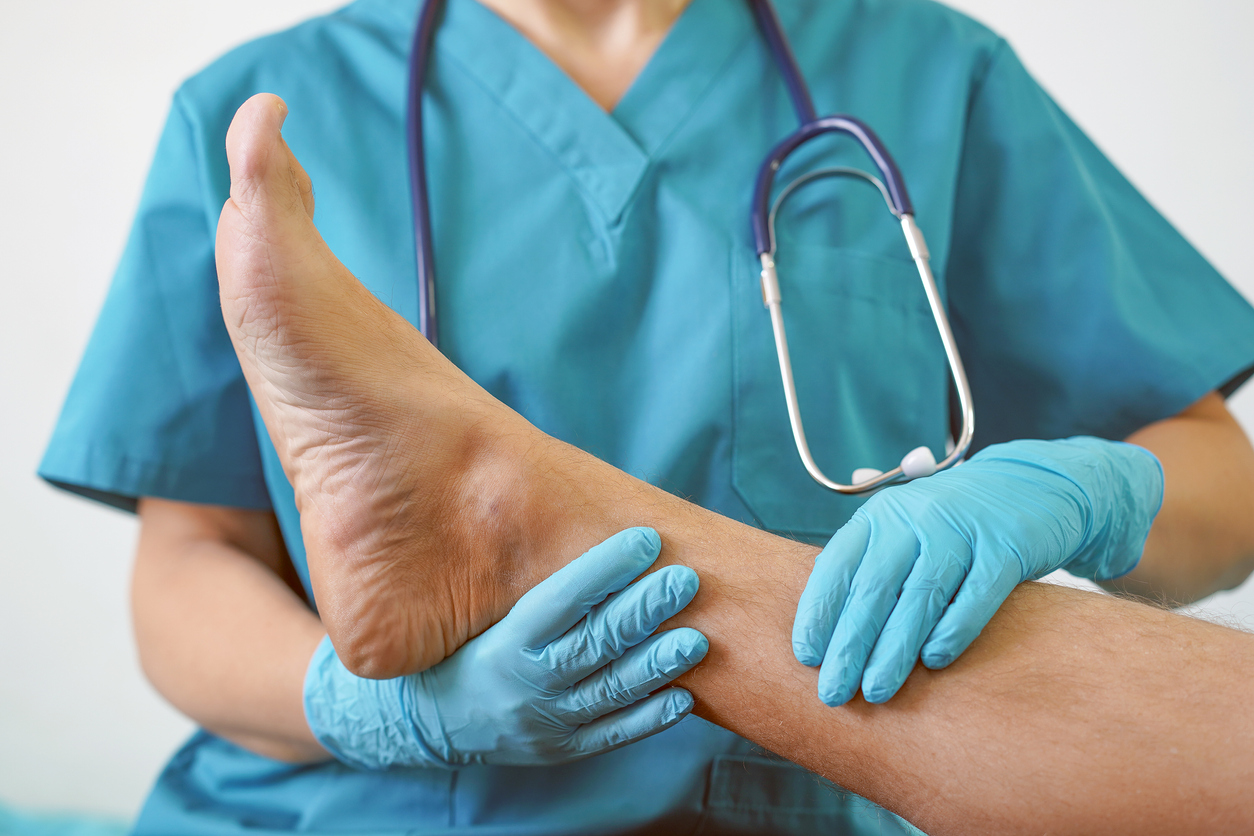
Choosing the Right Shoes
One of the fundamental aspects of foot care is selecting appropriate footwear. Aging feet changes, such as decreased bone density and joint degeneration, can make shoes even more crucial. Ill-fitting shoes can exacerbate foot pain and other issues. When choosing the right shoes for aging feet, consider the following factors:
- Support and Cushioning: Look for shoes with ample arch support and cushioning to reduce the impact on joints and provide comfort.
- Proper Sizing: Ensure that your shoes fit well and don’t squeeze or rub against your toes, which can lead to issues like ingrown toenails.
- Wide Toe Box: Opt for shoes with a wide toe box to allow your toes to spread naturally and reduce pressure on the big toe joint.
- Low Heels: Avoid high heels or shoes with excessively elevated heels, as they can strain the Achilles tendon and contribute to balance problems.
- Orthotic Inserts: If needed, consult a podiatrist to get custom orthotic inserts designed to address your specific foot issues. These inserts can significantly improve comfort and support.
Foot Exercises and Stretching
Maintaining flexibility and strength in the feet is essential to counteract the effects of aging and promote overall foot health.
- Importance of Maintaining Flexibility: Regular stretching exercises can help maintain the flexibility of the foot’s connective tissues, called ligaments. Stretching can also alleviate tightness in the calf muscles, which can contribute to various foot problems.
- Strengthening Exercises: Strengthening exercises for the muscles of the feet and ankles can improve stability and reduce the risk of injuries. Exercises like toe curls, calf raises, and ankle circles can be beneficial.
Hygiene and Moisturizing
Proper hygiene and moisturizing are essential for foot care, especially for older adults who may experience skin and nail changes.
- Skin and Nail Care: Dry skin and brittle nails are common as we age. Regularly moisturizing the skin of your feet and keeping your nails trimmed can help prevent discomfort and reduce the risk of complications.
- Preventing Infections: Aging feet may have a decreased ability to fight off infections. Therefore, keeping the feet clean and dry is crucial, paying extra attention to the spaces between the toes where fungal infections can develop. Antifungal powders or creams can be used as a preventive measure.
Regular Check-ups and Podiatrist Visits
Proactive foot care involves seeking professional guidance and assessment to catch potential issues early and receive appropriate treatment.
- Importance of Professional Assessment: Regular check-ups with a podiatrist or foot and ankle surgeon are essential for aging adults. These professionals can identify foot problems, such as ingrown toenails or structural issues, and guide in managing and preventing them.
- Early Intervention: Timely intervention can make a significant difference in managing foot conditions. Conditions like plantar fasciitis, Achilles tendinitis, or stress fractures can be effectively treated when detected early, preventing them from becoming chronic sources of pain and discomfort.
Video Credit: @MoreLifeHealth
Prioritizing Foot Health in Aging
Aging foot changes are a natural part of aging, impacting various aspects of foot health. Foot pain, flat feet, and numerous other foot problems, including big toe joint pain and diabetic foot ulcers, are common concerns among older adults.

Aging feet undergo various changes that can affect individuals differently. While some of these changes may be permanent, taking steps to address them through proactive foot care, appropriate footwear, and regular professional check-ups can significantly enhance foot health in older adults. By recognizing the importance of foot health in aging, individuals can maintain mobility, reduce pain, and improve their overall quality of life.
Frequently Asked Questions
What are aging feet changes?
Aging feet changes refer to the natural alterations that occur in the structure and function of the feet as people grow older. These changes encompass various aspects, including bone density, joint health, and skin condition.
What are common foot problems associated with aging?
Common foot problems in aging individuals include pain, flat feet, and conditions like plantar fasciitis. These issues often result from structural changes, such as weakened ligaments and poor circulation.
How does aging affect the big toe joint and the toes in general?
Aging can lead to issues like claw toes and stiffness in the big toe joint. These changes may affect mobility and cause discomfort.
What role does wearing shoes, especially high heels, play in aging foot problems?
Wearing ill-fitting or high-heeled shoes can exacerbate foot problems in older adults. Proper footwear is crucial to maintain foot health.
Yes, foot and ankle surgeons specialize in addressing various foot problems, including those associated with aging. They can provide treatments and recommendations for managing discomfort.
Are there exercises or therapies to relieve foot pain and improve foot health?
Strengthening exercises, physical therapy, and shoe inserts can help alleviate foot pain and enhance foot function in older adults.
How can I prevent common aging foot problems and maintain foot health?
To maintain healthy feet as you age, it’s essential to pay attention to your footwear choices, practice good foot hygiene, and seek professional advice from a foot doctor or podiatrist regularly.
🌟 Explore the Ultimate Senior Parenting Hub! 🌟
Join the Senior Parents community today and unlock a world of invaluable resources, support, and wisdom for navigating the golden years with your beloved senior. 🌼
🔗 Connect with us: 🌐 Visit our website: sr-parents.com
👍 Like us on Facebook: facebook.com/sr.parents
📸 Follow us on Instagram: instagram.com/seniorparents
📌 Pin with us on Pinterest: pinterest.com/seniorparents
🐦 Tweet with us on Twitter: twitter.com/senior_parents
Take advantage of the latest tips, heartwarming stories, and a vibrant community of like-minded senior parents. Your journey just got brighter! ✨ #SeniorParents #AgingWithGrace

